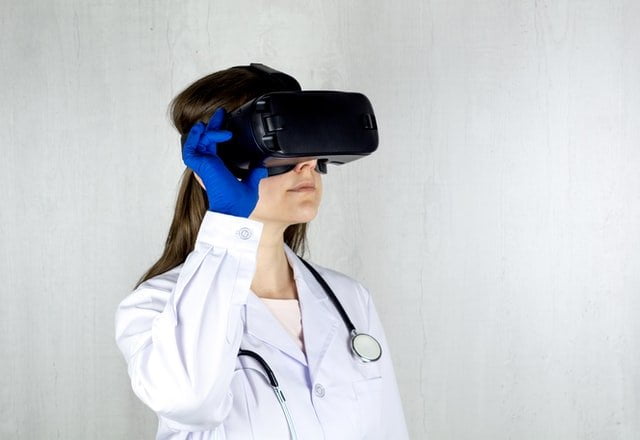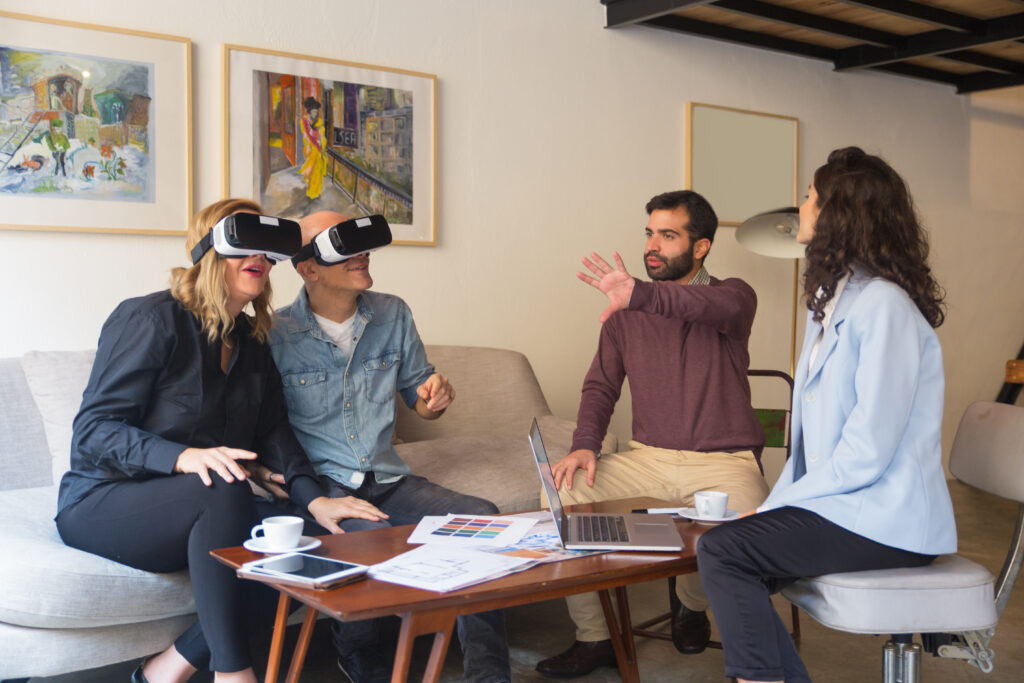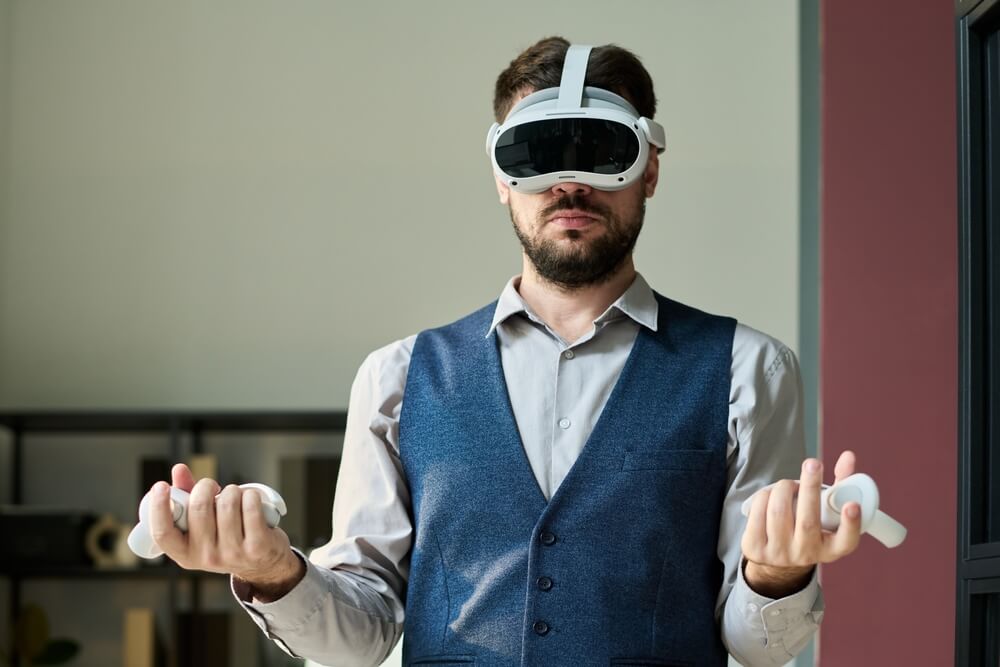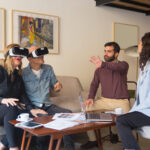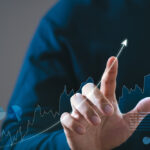Mixed Reality in Healthcare
Table of Contents:
Hospitals and health systems work hard every day to deliver the best possible patient-centered care. Medical specialists all over the world do their best to improve the patient experience with one way of reducing medical vulnerability being to harness the potential of MR (mixed reality). Mixed reality in the medical field means healthcare professionals can see and interact with 3D objects that are displayed in their environment, whether it be in a doctor’s office or an operating room, while doctors and nurses can learn more effectively (there is an app that trains professionals without the need to use cadavers). Real-time diagnostics allow doctors to access data, MRI scans and test results quickly, even when they don’t have their tablet or any other display. Finally, MR in medicine also allows image-guided surgeries – assisted surgeries supported via an app.
What is mixed reality?
Mixed reality is when the virtual world coincides and interacts with the real world which makes it relevant for use in AI-based training. Like other forms of virtual reality, the technology requires the user to wear a headset like HoloLens, but there are actually two types of MR. One starts with the real world (some experts consider it an advanced form of AR as the user remains in the real-world environment while digital content is added to it. Virtual objects can interact with the real world, though) and the other with the virtual world – the user is immersed in the virtual environment while the real world is blocked out. It may seem like VR, but the digital objects appear over ones in the real world (while in VR, the environment isn’t connected to the real world around the user).
What is the difference between mixed reality and augmented and virtual reality?
All three play an important role in the development of both healthcare and a wide variety of industries. Virtual reality provides a simulation which enables the user to fully immerse themselves in a virtual world. Here, the user doesn’t have any sense of the real world. On the other hand, augmented reality is an overlap of virtual information onto the physical world that enhances the overall experience. Finally, mixed reality falls somewhere between AR and VR. It doesn’t just overlay but anchors virtual objects to the real world. So, the main difference between MR and AR and VR is the interaction between the real and virtual worlds. In terms of the future development of medicine, MR, with its added interactive capabilities, may have the largest potential to change both the digital and the real landscape of healthcare.
Practical uses of mixed reality in healthcare and the medical field
Medical processes and procedures require the highest degree of focus and accuracy. Performing critical surgeries means analyzing multiple variables to make the right decisions in every situation. MR in medicine can make procedures much simpler to perform for healthcare professionals while also making them safer for patients. Currently, the following uses of mixed reality in healthcare are worth mentioning.
Interactive medical training
Medical training should be as immersive as possible so that the prospective doctor is fully prepared for their future duties. Mixed reality in the medical field may provide the opportunity to gain knowledge faster and more effectively. Thanks to the healthcare mixed reality HoloLens, students can physically perform practice surgeries without risking lives. Training efficacy may be greater than ever before. In some cases, students don’t have to practice surgeries using cadavers anymore.
Real-time diagnostics
Performing medical diagnostics is often a race against the clock. If a doctor isn’t equipped with the appropriate data or doesn’t know the patient’s medical history, this may lead to the wrong decisions being made. Mixed reality in healthcare makes it possible to reduce the number of people required to make a diagnosis, which makes the whole process much faster and less stressful for the patient. The use of MR in medical diagnostics has given rise to real-time medical visualization tools. For example, there is the virtual autopsy table which displays a scanned image of the patient’s body in real-time. Mixed-reality glasses display digital images over to the patient’s body to perform real-time analysis. Mixed reality headsets can identify patients and instantly provide relevant medical information to doctors. This saves time during interactions and allows doctors to respond to emergencies quickly.
Image-guided surgeries
Image-guided surgeries help surgeons perform operations with greater precision. Doctors are provided with real-time information on the patient’s health condition during surgery. They can view images from non-intrusive scanning systems so that they are able to follow and react to changes occurring in the patient’s body during surgery. Like a mobile phone global positioning system, surgical navigation continuously tracks parts of the patient’s anatomy and displays them on a monitor during the surgery.
This helps orient the surgeon with 3D images of the patient’s body (including tumors, for example) and prevents any hidden complications. The mapped-out surgical plan overlaid onto the real patient makes it possible for the surgeon to be precisely guided during the procedure. Thanks to mixed reality in medicine, multiple experts are able to join the surgery remotely to help make decisions as it progresses.
Surgical planning and patient education
Virtual surgery intelligence allows doctors to show patients their own MRI scans and explain the level of complication in a surgical procedure in a visual format. It enhances the patient experience as both patient and doctor can share the same perspective. Discussing the surgery and planning and initiating the treatment procedure in this way reduces response times in patient care. Patients are better prepared for surgeries and feel less anxious about procedures.
Remote patient care
Having instant access to real-time data provides a great chance for hospitals to provide hospital-level care to patients at home. Thanks to the healthcare mixed reality HoloLens, patients can feel more comfortable and at the same time, the load on in-house hospital resources can be reduced. Any resources that have been freed up can be used for more critical patients.
Applications in rehabilitation and pain management
Beyond surgical applications, mixed reality is proving beneficial in rehabilitation and pain management. Patients recovering from injuries or surgeries can engage in interactive MR environments that motivate them to participate actively in their recovery process. These immersive experiences not only make therapy sessions more enjoyable but also enhance physical rehabilitation outcomes by promoting greater engagement and adherence to treatment plans.
Furthermore, MR can serve as a distraction technique during painful procedures; for example, children undergoing injections can be immersed in calming virtual environments that alleviate anxiety and discomfort.
Addressing neurological conditions
The burden of neurological diseases is another area where mixed reality shows promise. Conditions such as Alzheimer’s disease and Parkinson’s disease present significant challenges for both patients and healthcare providers.
Mixed reality in the medical field can create tailored virtual environments that aid in cognitive rehabilitation and motor skill improvement for these patients. As the prevalence of neurological disorders rises—projected to affect over 1.2 million people with Parkinson’s alone by 2030—the demand for innovative therapeutic solutions like MR will likely increase significantly..
What do you need to start using MR in medicine?
Of course, when you decide to implement MR technology, you need professional software that will enable you to anchor virtual objects to the real world. In order to build immersive 3D objects, you need a suite of MR software development tools that will add in sensory feedback to give a sense of presence and immerse the user in the interactive elements. Most often, goggles, helmets, and glasses are used to allow the user to see 3D objects as if they were actually there. As mixed reality is a much newer concept than VR and AR, the devices are still more expensive than VR and AR software. One of the examples of this is Microsoft’s HoloLens2.
Growth of the mixed reality healthcare market
The mixed reality healthcare market has witnessed remarkable growth, with projections indicating an increase from $0.47 billion in 2023 to approximately $4.39 billion by 2028, representing a compound annual growth rate (CAGR) of 57.7% during this period.
This surge is largely attributed to the rising adoption of mixed reality technologies across various healthcare applications, including surgical simulations, patient care management, and medical training. The integration of artificial intelligence and holographic telemedicine is expected to further drive this growth, providing innovative solutions that enhance patient outcomes and streamline healthcare delivery.
The future of mixed reality in healthcare and medicine
MR in medicine offers a chance to find new ways of interacting with patients by projecting information onto medical charts. Actually, it can even project information directly onto the patient. The technology provides a means of viewing images and data in the most convenient way, which makes doctors’ work much more efficient. The healthcare mixed reality HoloLens offers amazing capabilities by using holograms to create realistic images. Even if the device is still considered to be relatively expensive (over $3,000 now), the price is relatively low compared to many common medical devices. No doubt we can expect cheaper headsets to come to the market very soon.
In the near future, mixed reality in healthcare will be something that empowers care teams – more and more care teams will be able to collaborate remotely and conduct virtual patient consultations using real-time information. The patient experience will be enhanced even more thanks to individual treatment plans and accelerated clinical diagnoses. MR in medicine will enable innovative telehealth solutions to improve care coordination which will result in faster and better care at lower costs. With instant access to information and interactive programs for students, it seems that MR in medicine may turn out to be a primary means of educating future doctors and diagnosing patients. In recent years, healthcare has been progressing at lightning speed and it’s clear that mixed reality is opening up a world of possibilities for medical care which are set to speed up this progress even further.
Check also VR Improves Health Effects Of Gaming Vs Traditional Consoles.

Author: Rafał Siejca
Rafal has over twenty years of corporate experience, including roles at Millennium Bank, Comarch, and leading software teams at PZU, one of Europe’s largest insurance companies. As one of Poland’s few true VR experts with a decade of experience, he ensures timely, high-quality project delivery as CEO and CTO.

